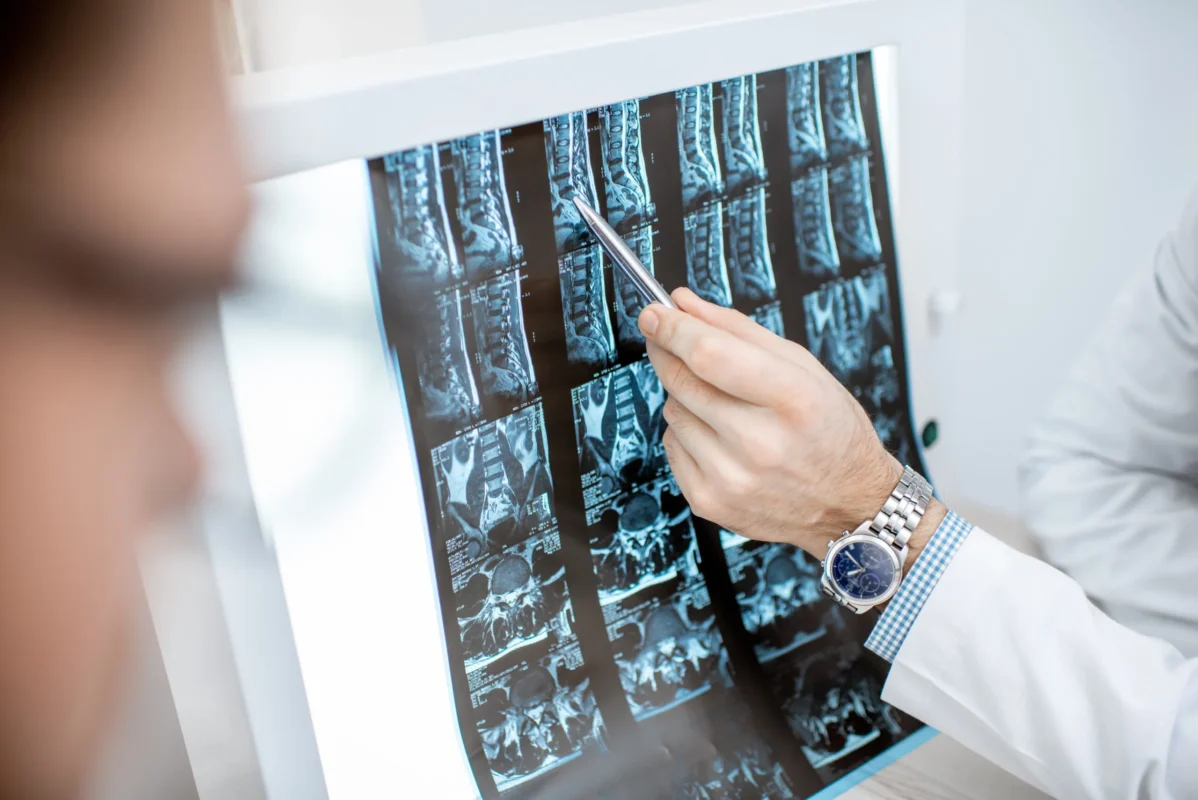Scoliosis and rheumatoid arthritis are two distinct medical conditions that can have a significant impact on an individual’s quality of life. While they may seem unrelated, there is a connection between these two conditions that warrants exploration. This article aims to provide a comprehensive understanding of scoliosis and rheumatoid arthritis, their prevalence in patients, the impact of rheumatoid arthritis on scoliosis progression, common symptoms, diagnostic methods, and treatment options for managing both conditions.
Comprender la escoliosis
Scoliosis is a musculoskeletal disorder characterized by an abnormal curvature of the spine. It can occur in individuals of all ages, but it most commonly develops during adolescence. The curvature can be either “C” or “S” shaped and may cause the spine to rotate, resulting in a visible deformity. Scoliosis can lead to various complications, including pain, limited mobility, and respiratory issues if left untreated.

Understanding Rheumatoid Arthritis
Rheumatoid arthritis is an autoimmune disease that primarily affects the joints. It occurs when the immune system mistakenly attacks the body’s own tissues, leading to chronic inflammation in the joints. This inflammation can cause pain, stiffness, and swelling, ultimately leading to joint deformities and loss of function. Rheumatoid arthritis can also affect other organs, such as the heart and lungs, further complicating the condition.

The Prevalence of Scoliosis in Rheumatoid Arthritis Patients
Research suggests that there is a higher prevalence of scoliosis in individuals with rheumatoid arthritis compared to the general population. A study published in the Journal of Rheumatology found that approximately 20% of rheumatoid arthritis patients had scoliosis. This prevalence is significantly higher than the estimated 2-3% prevalence of scoliosis in the general population.
The Impact of Rheumatoid Arthritis on Scoliosis Progression
Rheumatoid arthritis can have a significant impact on the progression of scoliosis. The chronic inflammation associated with rheumatoid arthritis can weaken the ligaments and muscles supporting the spine, leading to increased instability and curvature progression. Additionally, the joint deformities caused by rheumatoid arthritis can further contribute to the development and progression of scoliosis.
The Relationship Between Scoliosis and Rheumatoid Arthritis
The exact relationship between scoliosis and rheumatoid arthritis is not fully understood. However, it is believed that the chronic inflammation and joint deformities associated with rheumatoid arthritis may contribute to the development or worsening of scoliosis. Additionally, the abnormal spinal curvature in scoliosis can potentially exacerbate the joint pain and stiffness experienced by individuals with rheumatoid arthritis.
Common Symptoms of Scoliosis and Rheumatoid Arthritis
The symptoms of scoliosis and rheumatoid arthritis can vary depending on the severity of the conditions. Common symptoms of scoliosis include an uneven waistline, shoulder or hip asymmetry, and a visible curvature of the spine. In contrast, rheumatoid arthritis symptoms include joint pain, stiffness, swelling, fatigue, and general malaise. Individuals with both conditions may experience a combination of these symptoms, which can significantly impact their daily lives.
Diagnostic Methods for Scoliosis and Rheumatoid Arthritis
Diagnosing scoliosis typically involves a physical examination, where a healthcare professional assesses the curvature of the spine and checks for any associated symptoms. X-rays may also be used to measure the degree of curvature and determine the appropriate treatment approach. On the other hand, diagnosing rheumatoid arthritis involves a combination of physical examination, blood tests to detect specific antibodies, and imaging tests such as X-rays or MRI scans to assess joint damage and inflammation.

Treatment Options for Scoliosis and Rheumatoid Arthritis
The treatment options for scoliosis and rheumatoid arthritis can vary depending on the severity of the conditions and the individual’s specific needs. Non-surgical approaches are often the first line of treatment for both conditions and may include physical therapy, pain management techniques, and the use of assistive devices such as braces or orthotics. In more severe cases, surgical interventions may be necessary to correct the spinal curvature in scoliosis or to address joint damage and deformities in rheumatoid arthritis.
Non-Surgical Approaches for Managing Scoliosis and Rheumatoid Arthritis
Non-surgical approaches for managing scoliosis and rheumatoid arthritis focus on pain management, improving mobility, and preventing further progression of the conditions. Physical therapy exercises can help strengthen the muscles supporting the spine and joints, improving stability and reducing pain. Additionally, pain management techniques such as medication, heat or cold therapy, and acupuncture may be used to alleviate symptoms and improve overall well-being.
Surgical Interventions for Scoliosis and Rheumatoid Arthritis
Surgical interventions for scoliosis aim to correct the abnormal curvature of the spine and stabilize the spine. This may involve the use of spinal fusion, where metal rods and screws are inserted to straighten the spine and promote fusion of the affected vertebrae. In rheumatoid arthritis, surgical interventions may be necessary to address joint deformities and restore function. Joint replacement surgeries, such as hip or knee replacements, can significantly improve mobility and reduce pain in affected individuals.
Conclusiones y perspectivas
Scoliosis and rheumatoid arthritis are two complex medical conditions that can have a significant impact on an individual’s life. Understanding the connection between these conditions is crucial for effective management and treatment. While non-surgical approaches are often the first line of treatment, surgical interventions may be necessary in severe cases. Further research is needed to explore the relationship between scoliosis and rheumatoid arthritis and develop more targeted treatment options to improve outcomes for individuals with both conditions. By addressing the unique challenges posed by scoliosis and rheumatoid arthritis, healthcare professionals can provide comprehensive care and improve the quality of life for affected individuals.
Referencias
- Instituto Nacional de Artritis y Enfermedades Musculoesqueléticas y de la Piel. “Scoliosis.” https://www.niams.nih.gov/health-topics/scoliosis.
- Arthritis Foundation. “Understanding Rheumatoid Arthritis: Causes and Symptoms.” https://www.arthritis.org/about-arthritis/types/rheumatoid-arthritis.
- Journal of Rheumatology. “Prevalence of Scoliosis in Patients with Rheumatoid Arthritis.” https://www.jrheum.org/content/early/2020/01/14/jrheum.190753.
- Sociedad de Investigación de la Escoliosis. “Scoliosis and Comorbid Conditions.” https://www.srs.org/professionals/patient-education/scoliosis-and-comorbid-conditions.
- Clínica Mayo. “Rheumatoid Arthritis: Overview, Symptoms, and Diagnosis.” https://www.mayoclinic.org/diseases-conditions/rheumatoid-arthritis/symptoms-causes/syc-20353608.
- Colegio Americano de Reumatología. “Managing Scoliosis in Patients with Rheumatoid Arthritis.” https://www.rheumatology.org/Portals/0/Files/Management-of-Scoliosis-in-Patients-with-Rheumatoid-Arthritis-2018.pdf.
- Salud de la columna vertebral. “The Effects of Rheumatoid Arthritis on Spinal Deformities.” https://www.spine-health.com/conditions/scoliosis/rheumatoid-arthritis-and-spinal-deformities.
- British Journal of Rheumatology. “The Relationship Between Rheumatoid Arthritis and Scoliosis.” https://academic.oup.com/rheumatology/article/39/8/851/1799572.
